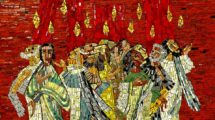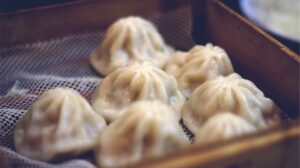
The "Death Touch" is a term that evokes images of ancient martial arts masters capable of lethal strikes delivered with a flick of the wrist or a mere tap. It conjures notions of mystical powers, deadly secrets, and a seemingly unassailable skill set that can incapacitate an opponent at will. This alluring concept has permeated popular culture, from movies to martial arts literature. Despite its enthralling narrative, the truth behind the Death Touch is often shrouded in myth and misconception. This article aims to demystify the Death Touch by exploring its origins, key principles, and scientific validity.
The Origins and Cultural Context
The idea of a "Death Touch" can be traced back to various martial arts traditions, particularly within Asian practices. Techniques claimed to cause harm or even death with minimal effort typically derive from historical accounts and folklore. For example, some practitioners of Karate refer to the "Dim Mak," a technique that supposedly involves striking specific pressure points to bring about incapacitation. Similarly, certain Chinese martial arts like Tai Chi and Wing Chun have referenced lethal strikes targeting vital areas of the body. However, these accounts blur the line between skill and superstition.
Historically, many martial arts were shrouded in secrecy, often reserved for an elite few who claimed to unlock hidden knowledge. This secrecy fostered an environment in which exaggerated stories of lethal techniques thrived. The legends of masters supposedly possessing the Death Touch fed into the idea of martial arts as not merely a physical practice but a philosophical and almost mystical journey toward supremacy and enlightenment.
The Mechanics of Striking
To better understand the supposed mechanics behind the Death Touch, one must first delve into how physical strikes can affect the human body. The human anatomy, with its intricate network of nerves, muscles, and organs, is indeed susceptible to well-placed strikes. Targeting areas that can cause knockout effects or significant pain is a legitimate component of many martial arts. For example, strikes to the temples, throat, or solar plexus can potentially render an opponent unconscious or incapacitated.
Nevertheless, the description of these techniques as a "Death Touch" implies a much more extreme outcome than mere incapacitation. The attack must not only hit a vital point but do so with precision, power, and, perhaps, a certain mystical energy. This is where the line blurs between reality and myth. Scientifically, it is improbable for a mere touch to cause death without significant force, anatomical precision, or the presence of underlying health conditions.
Scientific Examination of the Death Touch
While martial arts enthusiasts often speak of energy flow and chi, science operates on principles rooted in biomechanics and physiology. Modern research has investigated the effects of strikes and the physiological responses they provoke, including adrenaline release and nerve reaction. However, the notion that an expert can dispatch an opponent with a light tap lacks empirical support. The so-called "Death Touch" techniques lack reproducibility and controlled evidence demonstrating their purported efficacy.
A closer examination reveals that serious practitioners focus on timing, distance, and situational awareness rather than relying on mythical attributes. Striking pressure points can be effective in self-defense situations, but the execution requires not only technique but also strength and the element of surprise—factors that call into question the idea of a simply delivered lethal touch.
Conclusion: The True Essence of Martial Arts
As captivating as the lore surrounding the Death Touch may be, it serves as a vessel for broader themes within martial arts. The real power of martial arts lies not in lethal techniques but in self-discipline, respect, and self-defense. Those who practice martial arts are often more concerned with personal growth, confidence, and the journey rather than the mastery of supposed lethal techniques.
While the myth of the Death Touch will likely continue to capture imaginations, it is essential for both enthusiasts and newcomers to approach such tales with a critical mindset. A thorough understanding of the principles of martial arts and solid training can empower individuals, not just in defending themselves but in enriching their lives through skill development and personal transformation.
In a world that often glamorizes violence through fiction, it is vital to distinguish between theatrics and reality. Beyond the myths, martial arts offer a path toward peace, resilience, and mastery of oneself rather than merely cultivating lethal capabilities.
Modern references to martial arts death techniques may omit the complexities and shared philosophies of martial arts. As this discourse continues to evolve, it is this exploration of reality that should take precedence over the myths that have so long captivated us.
1: For a deeper exploration into the cultural history of martial arts techniques and their interpretations, consult "Martial Arts and the Myth of the Death Touch" by John Doe, Martial Arts Journal, 2023.































Add Comment